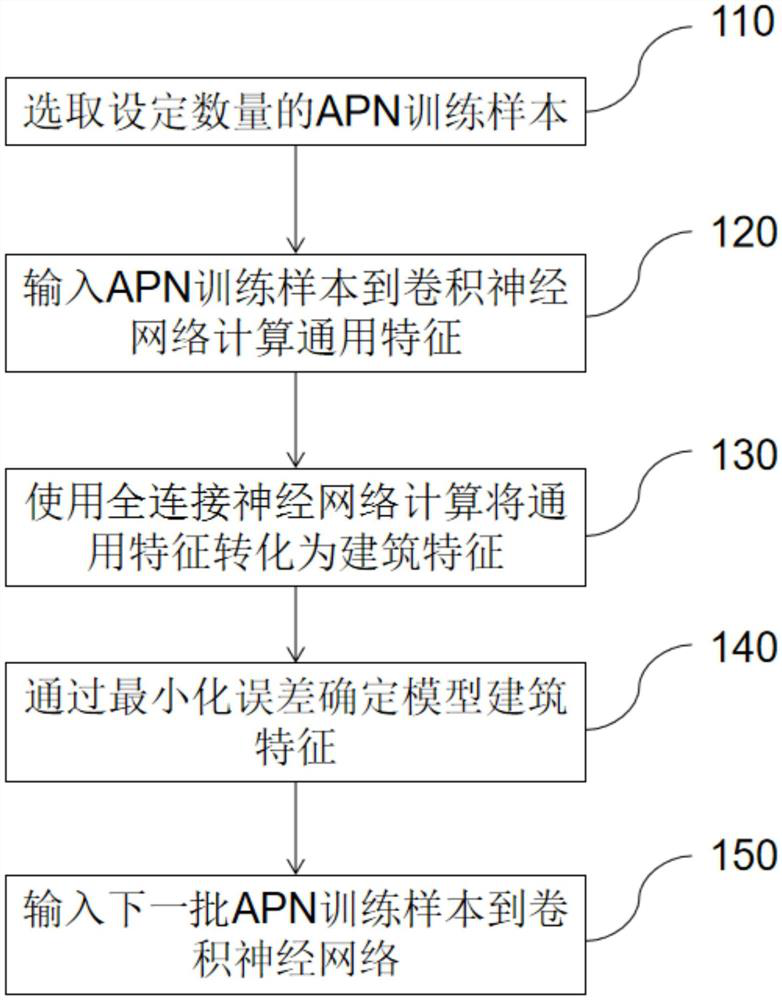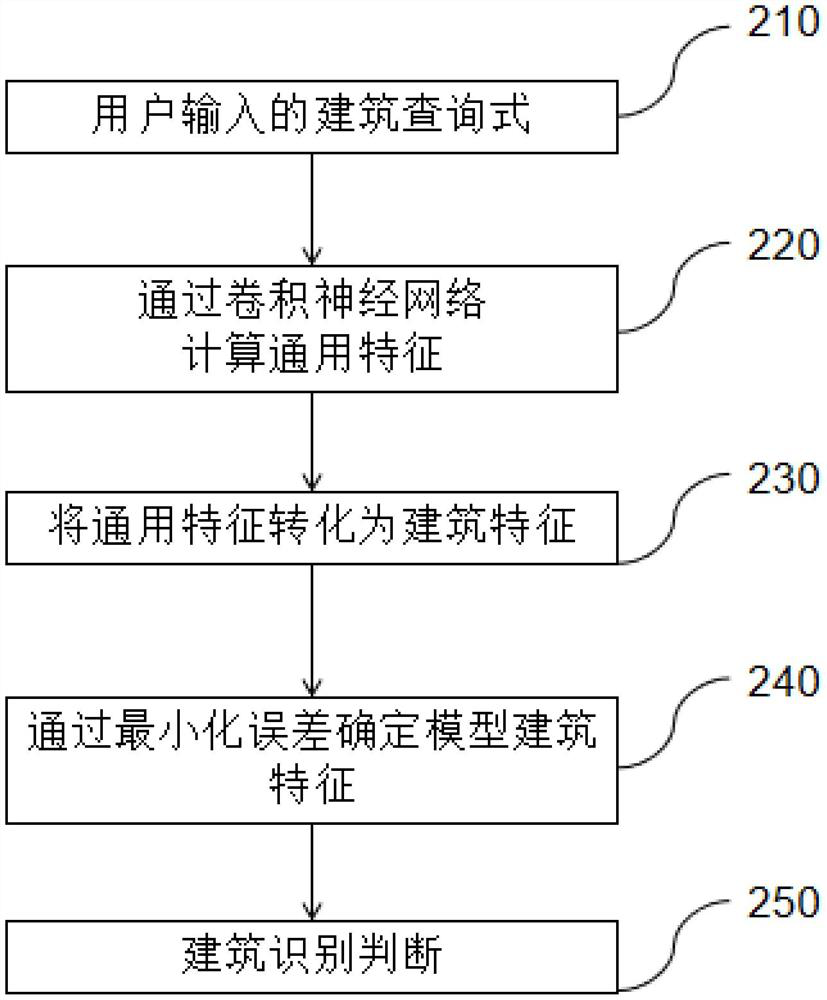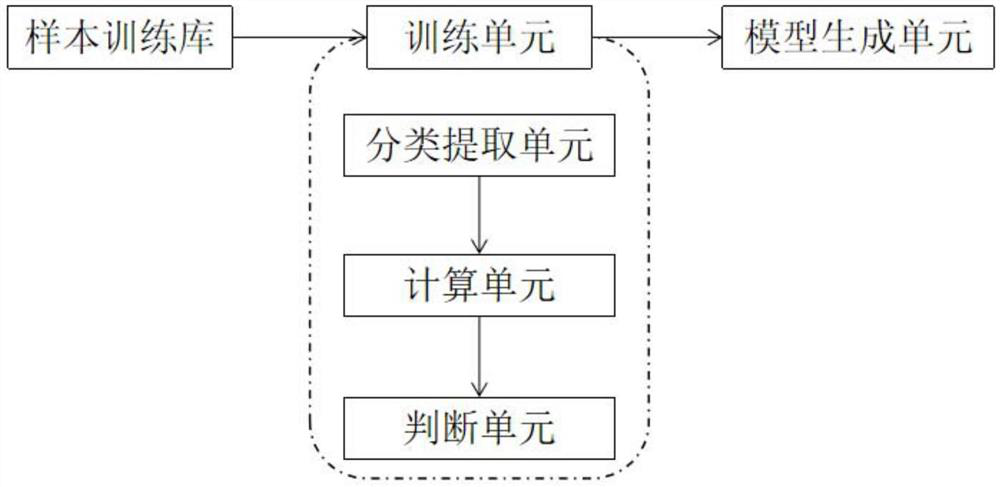A building recognition model building method, building recognition method and device
A technology for identifying models and establishing methods, applied in the field of information processing, can solve problems such as slow algorithm speed, achieve the effect of reducing difficulty, reducing computational complexity and calculation time, and making judgments simple and fast
- Summary
- Abstract
- Description
- Claims
- Application Information
AI Technical Summary
Problems solved by technology
Method used
Image
Examples
Embodiment 1
[0050] A method for establishing a building recognition model, comprising:
[0051] Use the APN data samples to train the convolutional neural network;
[0052] The convolutional neural network that has been trained is used as a building recognition model:
[0053] figure 1 An example flow of the training process of the convolutional neural network by APN data samples is shown. In various implementations of this example process, steps may be deleted, combined, or divided into sub-steps. The example process may include a preparation phase and a training phase.
[0054]In the preparation stage, it is necessary to prepare sample data for training, which includes a large amount of multi-channel data, such as tens of thousands of multi-channel image samples, and mark the correct recognition result corresponding to each sample. In this embodiment, the APN data samples include training building query formulas, positive sample building pictures, and other building pictures;
[00...
Embodiment 2
[0068] A method for building identification, comprising:
[0069] Obtain the architectural query type entered by the user;
[0070] Building feature vector acquisition;
[0071] Building identification judgment.
[0072] figure 2 An example flow of building recognition through a trained convolutional neural network is shown by inputting a building query. In various implementations of this example process, steps may be deleted, combined, or divided into sub-steps.
[0073] Specifically, the building recognition method includes the following steps 210-250:
[0074] In step 210, the building query formula input by the user is obtained; specifically, the building query formula is a building picture, and may also be a description of the picture or a certain part of the overall building picture.
[0075] In steps 220-240, input the building query formula into the training model, extract and transform it into a building feature vector of the building query formula through the b...
Embodiment 3
[0079] Such as image 3 As shown, a training device for applying a building recognition model, including:
[0080] A sample training library, the sample training library includes APN data samples, including training building query formulas, positive sample building pictures and other building pictures;
[0081] A training unit, configured to train a convolutional neural network using the sample training library;
[0082] The model generation unit generates a building recognition model through the convolutional neural network after training.
[0083] Specifically, the APN data sample is obtained through a crawler program or manual marking, or a crawler program supplemented with manual marking.
[0084] Specifically, the training unit includes:
[0085] The classification extraction unit is used to extract general features using the building recognition model, and adopts network shallow feature extraction;
[0086] A computing unit, configured to convert the general feature ...
PUM
 Login to View More
Login to View More Abstract
Description
Claims
Application Information
 Login to View More
Login to View More - R&D
- Intellectual Property
- Life Sciences
- Materials
- Tech Scout
- Unparalleled Data Quality
- Higher Quality Content
- 60% Fewer Hallucinations
Browse by: Latest US Patents, China's latest patents, Technical Efficacy Thesaurus, Application Domain, Technology Topic, Popular Technical Reports.
© 2025 PatSnap. All rights reserved.Legal|Privacy policy|Modern Slavery Act Transparency Statement|Sitemap|About US| Contact US: help@patsnap.com



